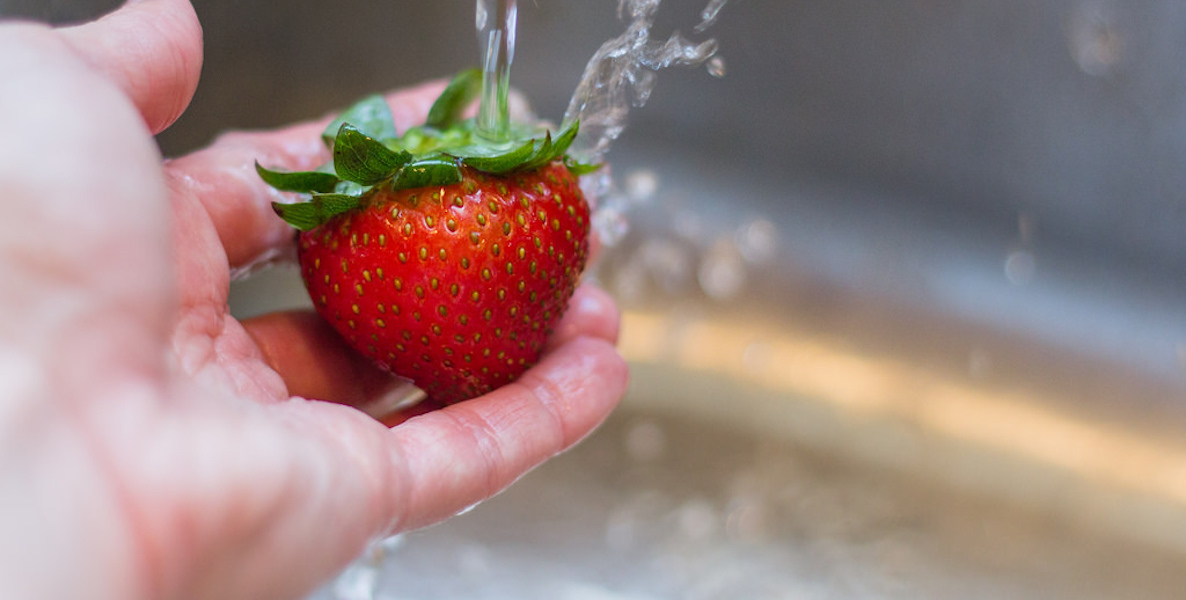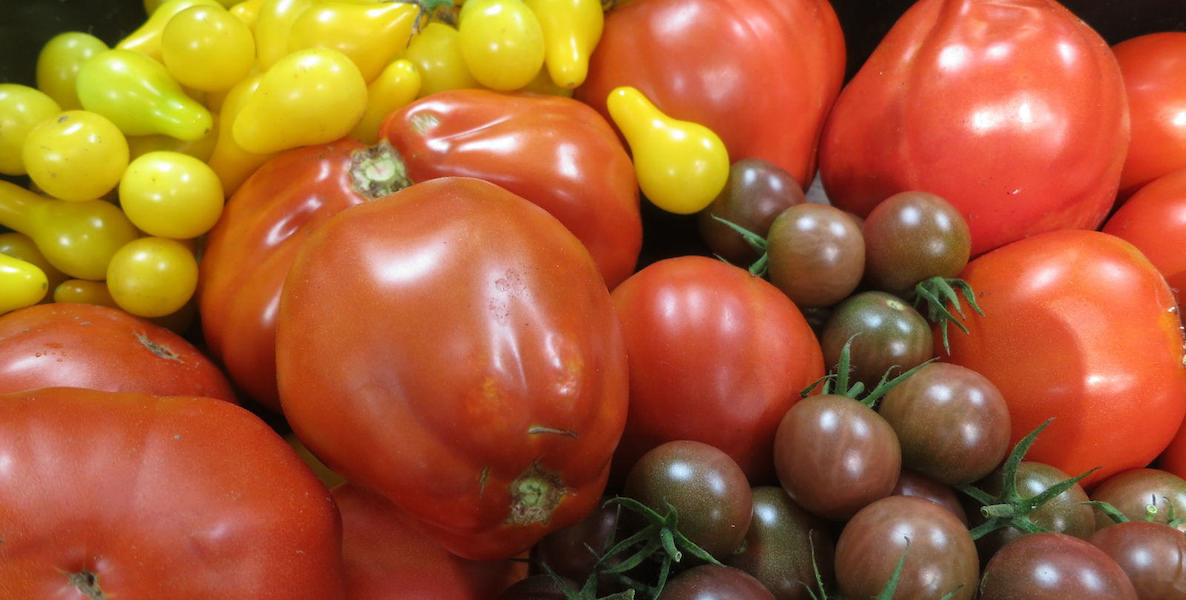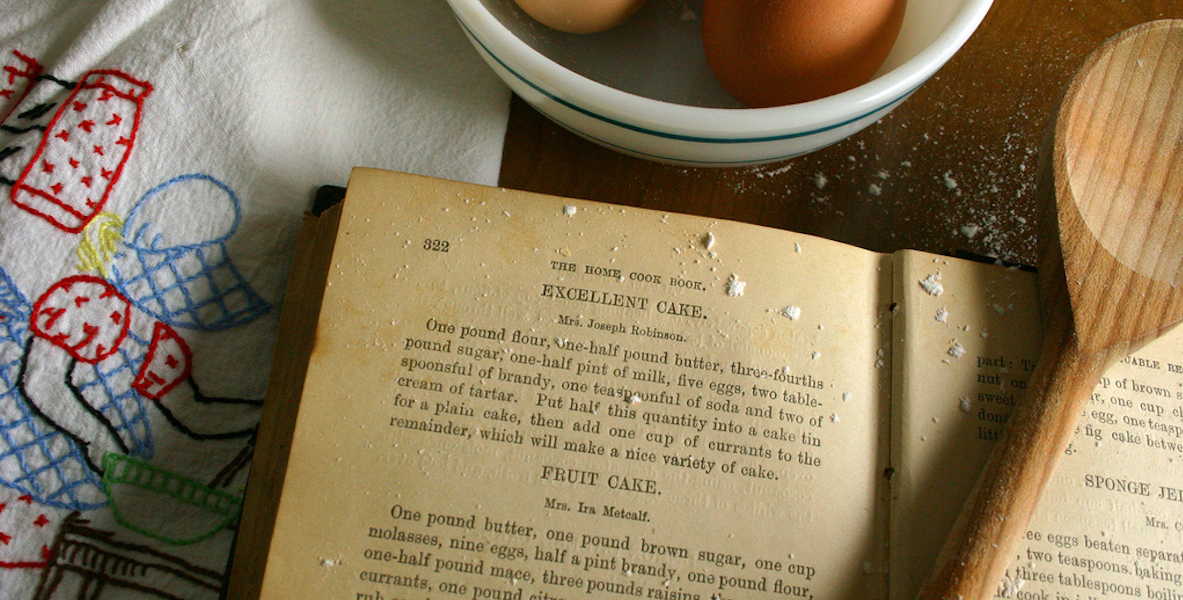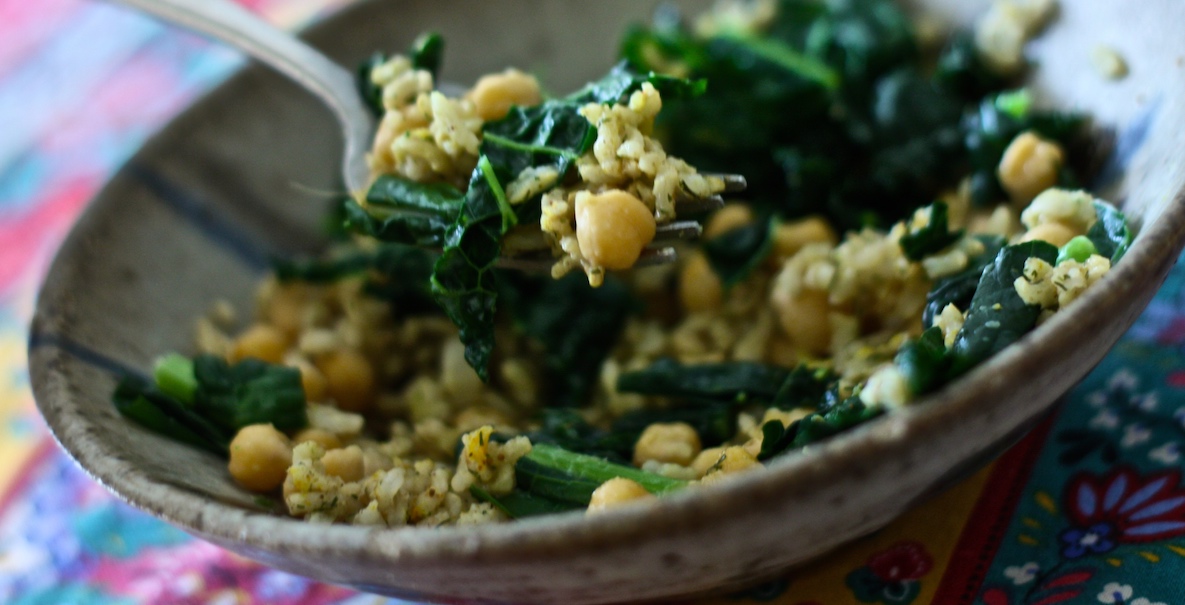Sixth graders from Masterman School push their way into the bronze-lattice elevator doors of the Free Library of Philadelphia’s main branch. Ethan, the boy in the very back of the elevator with the bright blue shirt, tells me that coming here has been “so nice.”
The moment the kids arrive at the 4th floor kitchen, Shayna Marmar, food educator and founder of Honeypie Cooking, tells them to “keep a calm atmosphere.” This is the students’ second and last class in the library’s “Nourishing Literacy” program, which includes programming for kindergarteners, third graders, and sixth graders.
These sixth graders attend two 2-hour classes to explore the world of food, to deepen their understanding of nutrition, and to see what those insights can teach them about literacy. Students take seats around three stainless steel kitchen tables. In front of each student is a plate with a potato chip, a raspberry, a kiwi, a piece of chocolate, and a tomato. Before they taste each item, Shayna asks what foods the kids see.
“Cherry tomato!”
“Dried raspberry!”
Their answers get even more precise once they started tasting.
“The chip is a little bitter.”
“The raspberry is kind of tart.”
Shayna explains that all the foods on their plates are acidic. That is the theme for their cooking today. But before they start, rather than simply telling them to wash their hands, Shayna demonstrates why they should before they cook. She tells the kids to close their eyes and go through their day so far, and to think about the things that their hands have come in contact with.
“Faucet.”
“Pencil.”
“Book.”
“Locker.”
“Violin.”
“Phone.”
“Money.”
“Dad.”
One girl, Louisa, with a bright red shirt and her straight black hair, manages to giggle without getting caught. She’s in the front when they obey Shayna’s direction to wash their hands.
Most of the kids, the ones wearing the high top Converse and the ones wearing the polo shirts, are talking to the children behind them — once they’re allowed to talk. They are mainly talking about their grades. It seems like getting less than 95 is frowned upon.
They are peeling cucumbers. They are squeezing honey. They are ripping the tops off the broccoli. They are mixing the dill in their bowls. And they are smelling the bowl as they go along.
When they get back to their tables, they start to pull the dill off the stems and into their bowls. I try to make conversation with Louisa, but she is more interested in picking her dill.
“Eyes on me, even if your back is toward me!” Shayna says, getting the kids’ attention.
![]()
Shayna tells everyone exactly how much of everything goes into the recipe and how. She makes sure everyone is following.
“How much salt?”
They respond correctly. I had already forgotten.
Shayna turns on upbeat music without words as students squeeze oranges in bowls. They are peeling cucumbers. They are squeezing honey. They are ripping the tops off the broccoli. They are mixing the dill in their bowls. And they are smelling the bowl as they go along.
“Add dill!”
“Get the citrus fruit!”
“You stir, and I’ll grind the pepper.”
“I don’t really know what dill even is.”
“It’s dillicious!”
Shayna shuts off the music and rings the bell.
“You’re doing so beautifully working together. Today is about getting ideas for things you can make when you leave this kitchen,” Shayna says. “Good cooks are good tasters because they know what to do next time. They know what works and what doesn’t.”
Shayna teaches the students about the process of fermentation — of growing friendly, healthy bacteria in foods. There is certain bacteria that really nourishes our body, she tells them.
“You’re doing so beautifully working together. Today is about getting ideas for things you can make when you leave this kitchen,” Shayna says. “Good cooks are good tasters because they know what to do next time. They know what works and what doesn’t.”
As the kids start to mix the kale, cauliflower, and cabbage, their hands are turning pinkish purple.
“Look! I have a purple thumb,” Ethan motions for me to come to his table. “It’s really interesting, right?”
It’s time to set the table. Each table gets its own ketchup, mustard, and water pitcher.
“I strongly recommend that you put some of everything on your plate, even if you don’t think you’ll like it,” Shayna says. “Try all the acidic foods and think about how you’ll want to make them in the future.”
![]()
I ask Ethan if he likes cooking, he tells me he likes to eat.
“Eating the food that you make is pretty satisfying,” he says. “I usually wouldn’t think of putting veggies on a hot dog, but it goes really well.”
Shayna rings the bell, and the students are quiet. She tells them to discuss the food in a way that respects their individual tastes.
“Before you head out, I want you to think about how to make the food good for your taste buds.”
The students talk about what they would do differently to make it taste better.
“More salt.”
“More vinegar.”
The kids stand up and meet their teacher by the door. Louisa savors every last bite, while her classmates stand in line near the front of the room. Except for Ethan. Ethan is still in the back-left corner, as if to savor the room, with its lingering acidic smells and hustle and bustle. He slowly puts on his sweater, pushes his chair in, and runs to meet the rest of his class at the door.
Nina Rohr is a junior at Penn majoring in English. This is one in a series of articles running on The Citizen and SafeKidsStories.
Header Photo: Nora Kuby for Flickr






